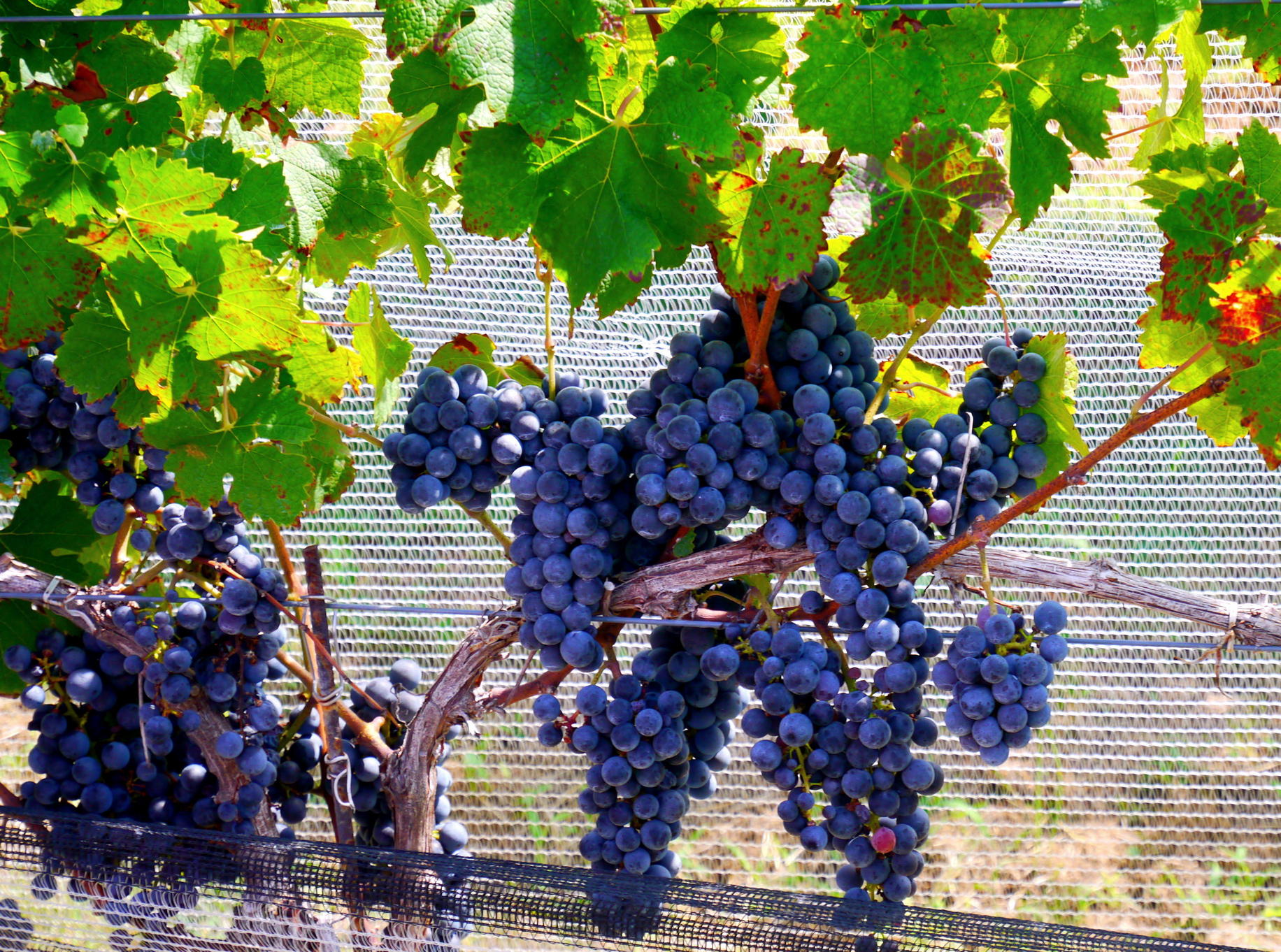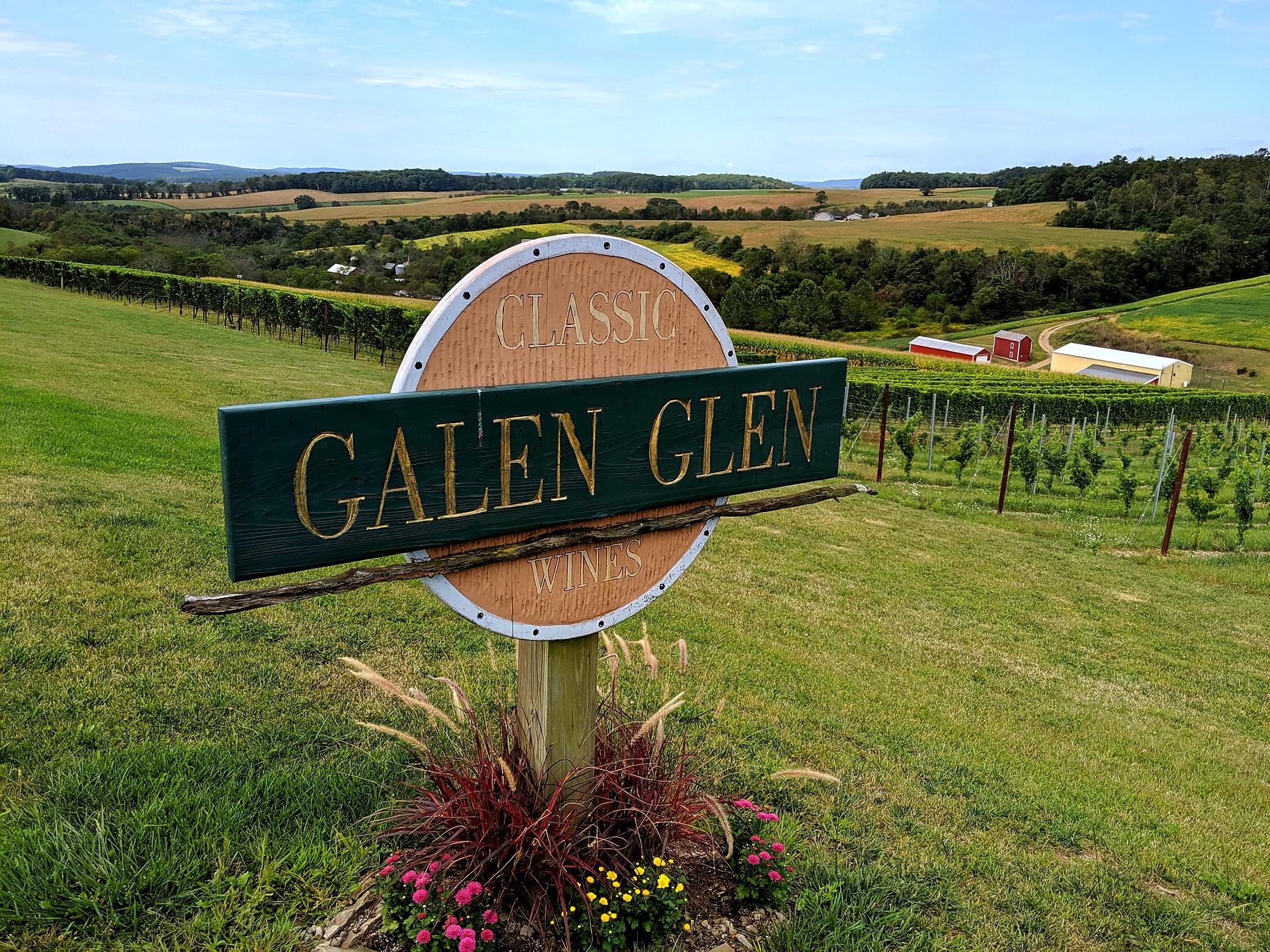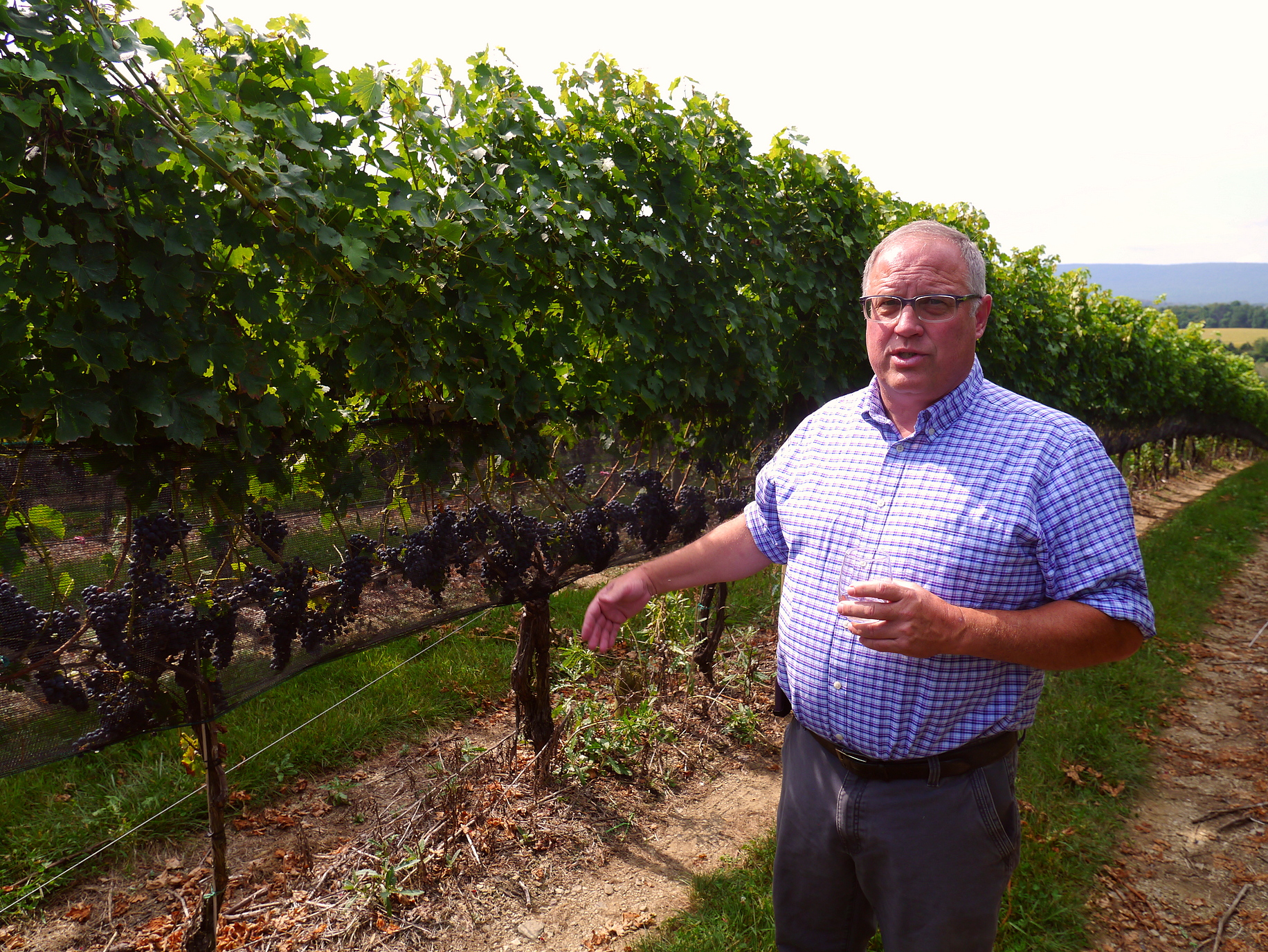William Penn must be smiling somewhere. With more optimism than horticultural knowhow, the Quaker son of an English admiral planted a Philadelphia vineyard of French wine grapes in 1683. They soon died off, and what wine Pennsylvania made until the 20th century was largely vinted from native labrusca grapes. There are accounts that some Pennsylvania wine was well-received in London in the 1760s, but the correspondent might have been merely polite.
There’s no longer any need to cut Pennsylvania wine special slack. I spent part of a week in September touring nine outstanding wineries in eastern Pennsylviania. While these nine represent just 3 percent of the Keystone State’s wineries, they demonstrate that Pennsylvania has the potential to make major league wines that can compete with the best of California and Europe. I’ll be passing along some thoughts about the wineries in the next three posts. Each of the wineries I’ll be profiling has a tasting and sales room on the property. This first post takes in a trio in the Lehigh Valley and Berks County east of Harrisburg. They’re no more than 20 miles apart on lovely country roads. Touring among them is a great way to see some beautiful farm country and get a feel for one strain of the region’s agricultural future.
From fossil-laden soils, Galen Glen raises crisp wines
 Five generations of Galen Troxell’s family struggled to raise crops on the family farm in a glacial glen in Andreas, Pennsylvania. But bad soil for soybeans can be good soil for wine grapes. Based on the climate challenges of the high elevation in the Lehigh Valley, the Troxell family made some unconventional choices when they established Galen Glen (255 Winter Mountain Drive, Andreas PA; 570-386-3682; galenglen.com) in the mid-1990s. They focused on Germanic grapes: Riesling, Gewürztraminer, and the less-known Grüner Veltliner. Over time, they have added some reds, including Cabernet Franc, Chamboucin, and Merlot. For the first two decades, Galen was the principal winegrower, although daughter Erin is slowly assuming the reins.
Five generations of Galen Troxell’s family struggled to raise crops on the family farm in a glacial glen in Andreas, Pennsylvania. But bad soil for soybeans can be good soil for wine grapes. Based on the climate challenges of the high elevation in the Lehigh Valley, the Troxell family made some unconventional choices when they established Galen Glen (255 Winter Mountain Drive, Andreas PA; 570-386-3682; galenglen.com) in the mid-1990s. They focused on Germanic grapes: Riesling, Gewürztraminer, and the less-known Grüner Veltliner. Over time, they have added some reds, including Cabernet Franc, Chamboucin, and Merlot. For the first two decades, Galen was the principal winegrower, although daughter Erin is slowly assuming the reins.
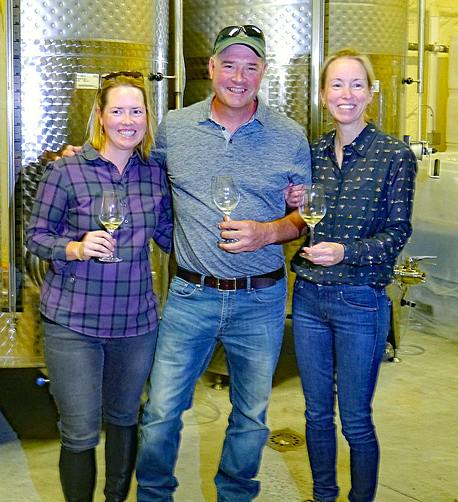 Winemaker Sarah Rhodes-Troxell (Galen’s spouse and Erin’s mother) left a career as a pharmaceutical chemist to make wine. Her exacting precision shines through in all of the Galen Glen wines. Moreover, she’s adept at manipulating grapes from different vineyards to produce multiple expressions of a grape in many vintages.
Winemaker Sarah Rhodes-Troxell (Galen’s spouse and Erin’s mother) left a career as a pharmaceutical chemist to make wine. Her exacting precision shines through in all of the Galen Glen wines. Moreover, she’s adept at manipulating grapes from different vineyards to produce multiple expressions of a grape in many vintages.
To my taste, Galen Glen’s Grüner Veltliners are some of the best I’ve tasted on this side of the Atlantic. Fruit-forward, food-friendly acidic, and bone-dry, they show grapefruit zing and passion fruit lusciousness on the palate after a complex herbaceous nose. The unoaked Vinology version might be the best companion to a white sausage I’ve tasted in a while. It is certainly a refreshing wine on a hot day. The less lusty but more nuanced Stone Cellar version has a long, lingering finesse that evokes the gradual nightfall of a warm day turning cool in late summer. It’s a rumination white.
Sarah also coaxes some unusually intense and concentrated wines out of the Riesling grapes grown in the family’s Fossil Vineyard. (Turn over the soil and bits of 360-million-year-old crinoids churn up.) Perhaps the biggest surprise is a spicy red that the Troxells call “Red German Bastards.” Vinted from Cabernet Dorsa, Zweigelt, and Regent, it earned its name because the massive leaf growth keeps the growing staff busy tying back and pruning (and cursing) all season. It’s an earthy, simple red companion for heavy sausages, strong cheese, and braised meats.
Stony Run capitalizes on Goldilocks microclimate
Larry Shrawder has big ambitions for Stony Run (67 Kempton Road, Kempton PA; 610-398-7231; stonyrunwinery.com). When he established the winery in 2013, he ripped out earlier vineyards of hybrid grapes and California clones in favor of cold-adapted varietals from all over Europe. Reasoning that his hilly vineyards could produce bold, brisk whites and the south-facing exposures would allow him to fully ripen reds, he launched with Pinot Noir and Chardonnay. He has shifted to emphasize Grüner Veltliner, Sauvignon Blanc, and Albariño among the whites. His reds focus on Cabernet Franc and Malbec, though he does produce some surprisingly ripe and full Cabernet Sauvignon. In all Stony Run grows 20 different varietals. Shrawder says he has been exploring what grows best and is slowly winnowing out the less suited grapes.
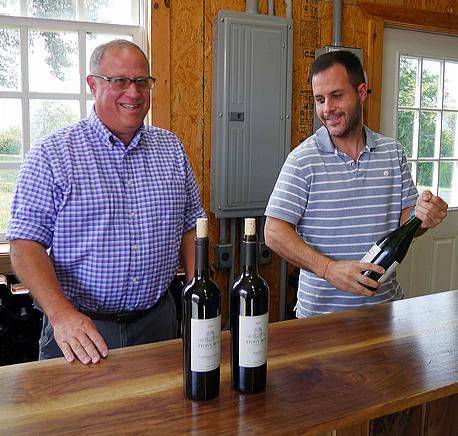 Stony Run uses contemporary, state-of-the-art equipment as handsome as any winery I’ve seen, but the winery’s success—to my taste—comes from precise management in the vineyard. Managing ripeness is the key. Shrawder picks largely based on acid levels in the grapes, not on sugar content. He also rigorously limits the leaf canopy. These practices control the spicy and herbal flavors derived from one complex organic aromatic compound, methoxypyrazine, found in all Bordeaux grapes.
Stony Run uses contemporary, state-of-the-art equipment as handsome as any winery I’ve seen, but the winery’s success—to my taste—comes from precise management in the vineyard. Managing ripeness is the key. Shrawder picks largely based on acid levels in the grapes, not on sugar content. He also rigorously limits the leaf canopy. These practices control the spicy and herbal flavors derived from one complex organic aromatic compound, methoxypyrazine, found in all Bordeaux grapes.
A nice touch of pyrazine (as it’s called for short) provides an herbaceous tarragon and chocolate mint quality to his brisk Sauvignon Blanc, for example. Stylistically, it’s more a kissing cousin of New Zealand sauv blanc than white Bordeaux—delicious and zingy for a summer day.
The lack of pyrazine in the Stony Run Cabernet Franc 2016 dispenses with that green bell pepper flavor that makes so much cab franc taste unripe. It’s plummy rich and very concentrated. Nor is there a trace of pyrazine in his very big, rather formal 2016 Cabernet Sauvignon and the even bigger 2016 Malbec. (The consulting winemaker, Ignacio Giordini Martínez, aka “Nacho,” hails from Mendoza, Argentina. He’s with Shrawder at right.) This very ripe Malbec exhibits nice soft leather notes on the nose, but will benefit from extended cellaring or thorough aeration. (Mendoza winemakers have been known to triple decant young Malbecs.)
Setter Ridge makes wines to warm a Francophile’s heart
If there’s one thing Rich Blair enjoys as much as trout fishing in Montana, it’s eating and drinking in central France. Setter Ridge (99 Dietrich Valley Road, Kutztown, PA; 610-683-8463; setterridgevineyards.com) launched in 2003 as Blair Vineyards, but adopted the current name in 2018 to avoid confusion with other wineries. Besides, English setters have been part of the family for three generations.
Dr. Catherine Peyrot des Gachon, who trained at the University of Montpellier in France’s Occitanie region, oversees the winemaking as a consultant. Blair himself directs the vineyards. Daughter Missy Wilson runs the business. The models for all the Setter Ridge wines are their French counterparts. They make a silky Cabernet Franc in the style of Chinon and bone-dry, concentrated wines from Riesling, Gewürztraminer, and Pinot Gris in the Alsatian style.
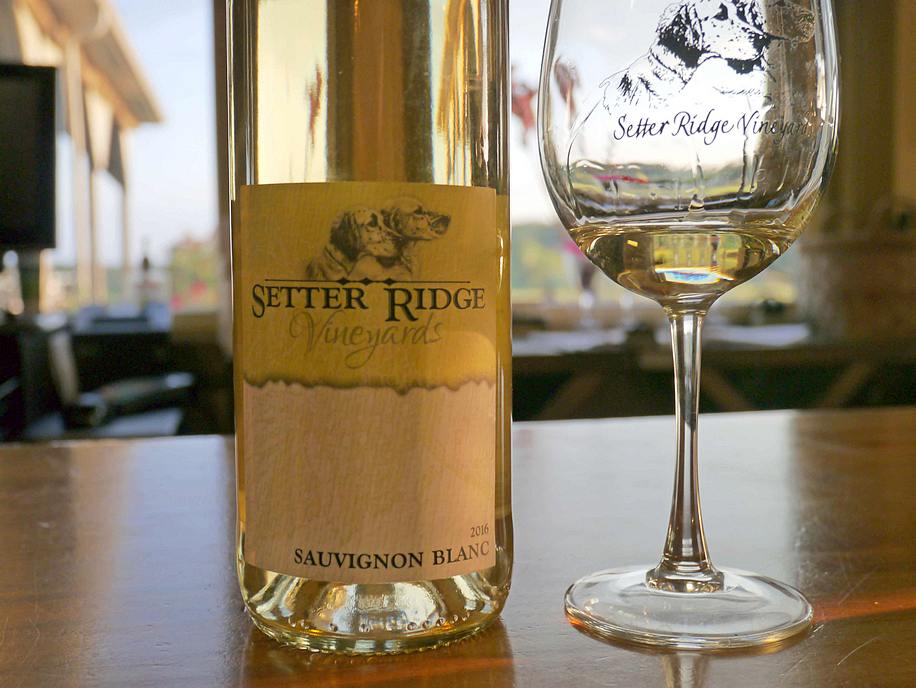 But Blair’s heart belongs to Dijon and Beaune, and his Pinot Noir and Chardonnay aspire to that Burgundian model. The elevation of his primary 24-acre vineyard in Kutztown is breezy enough to grow those grapes without fungal danger. A secondary eight-acre vineyard 400 feet higher was so hard hit by last winter’s freeze that it will have to be replanted.
But Blair’s heart belongs to Dijon and Beaune, and his Pinot Noir and Chardonnay aspire to that Burgundian model. The elevation of his primary 24-acre vineyard in Kutztown is breezy enough to grow those grapes without fungal danger. A secondary eight-acre vineyard 400 feet higher was so hard hit by last winter’s freeze that it will have to be replanted.
All the Setter Ridge wines I tried were exceptional. The 2016 Sauvignon Blanc could pass as excellent white Bordeaux in a blind test, with a soft honeydew melon musk and viscosity. I was most excited by the Stonehedge Vineyard Chardonnay. This wine spends a long time on the lees in old French oak, picking up a nutty quality that matches the ripe pear on the palate. The 2013, in particular, has a remarkable vivacity reflected in its pronounced minerality. The red companion, the 2013 Pinot Noir Reserve, gave me waves of nostalgia for a Beaune negociant Burgundy I used to drink in the mid-1980s. It has the acidity to pair nicely with food, and the luscious fruit to enjoy after dinner on a summer night as the fireflies wink on.

